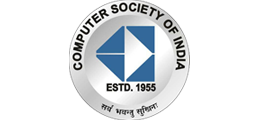Drone Simulator Python can be an intriguing, dynamic and academic project. We engage in various drone simulator Python projects and provide you with the most relevant research ideas and topics in Python, customized to meet your specific requirements. Please refer to the complete step-by-step guide designed to assist you in initiating your work. To help you in initiating the development process of drone simulator, we provide simple and crucial measures:
- Project Setup
Tools and Libraries:
- Python: For our simulator, Python is preferred as a main language.
- Pygame: Pygame is ideal for 2D simulations, and is a collection of python modules that are specifically modeled for drafting video games.
- NumPy: Manage the arithmetic calculations by implementing NumPy.
- Matplotlib: If it is required, use Matplotlib to exhibit data.
- Environment Configuration
Essential libraries need to be installed:
pip install pygame numpy matplotlib
- Basic Structure
The fundamental architecture of our project must be designed:
drone_simulator/
├── main.py
├── drone.py
├── environment.py
└── utils.py
- Specifying the Drone
With simple attributes and techniques for motion, we have to specify the Drone class in drone.py:
# drone.py
import numpy as np
class Drone:
def __init__(self, position, velocity, acceleration):
self.position = np.array(position)
self.velocity = np.array(velocity)
self.acceleration = np.array(acceleration)
def update(self, dt):
self.velocity += self.acceleration * dt
self.position += self.velocity * dt
def apply_force(self, force):
self.acceleration = force
def get_position(self):
return self.position
- Developing the Platform
Platform in which the drone will perform has to be developed in environment .py:
# environment.py
import pygame
class Environment:
def __init__(self, width, height):
self.width = width
self.height = height
self.screen = pygame.display.set_mode((width, height))
def draw(self, drone):
self.screen.fill((255, 255, 255))
pygame.draw.circle(self.screen, (0, 0, 255), drone.get_position().astype(int), 10)
pygame.display.flip()
def update(self):
pygame.display.update()
- Practicality Functions
If it is required, we need to include utility operations in utils.py like vector functions.
# utils.py
import numpy as np
def limit_vector(vector, max_value):
magnitude = np.linalg.norm(vector)
if magnitude > max_value:
return vector * max_value / magnitude
return vector
- Main Simulation Loop
Bring it all together in main.py:
# main.py
import pygame
import sys
from drone import Drone
from environment import Environment
# Initialize Pygame
pygame.init()
# Set up the environment
env = Environment(800, 600)
drone = Drone(position=[400, 300], velocity=[0, 0], acceleration=[0, 0])
# Main simulation loop
clock = pygame.time.Clock()
running = True
while running:
for event in pygame.event.get():
if event.type == pygame.QUIT:
running = False
# Simple control logic (e.g., move right continuously)
drone.apply_force([0.1, 0])
# Update drone
drone.update(clock.get_time() / 1000.0)
# Render the environment
env.draw(drone)
# Cap the frame rate
clock.tick(60)
pygame.quit()
sys.exit()
- Developments and Characteristics
For developing the simulator as highly practical and communicative, consider the following points:
- As regards manual drone motion, we have to include keyboard regulations.
- To attain more practicable drone activities, execute physics.
- It is approachable to include collision and obstacle detection.
- Especially for environments and control, it is required to add a basic FUI.
- Various weather scenario’s and platforms ought to be simulated.
- Further Knowledge
- Considering the more complicated simulation, search for modern libraries such as ROS (Robot Operating System).
- For a 3D drone simulator, 3D simulation libraries like PyBullet should be investigated.
Important 50 drone simulator python Projects
Considering the different perspectives and characteristics of Python in designing drone simulators, a list of 50 captivating project topics are proposed by us that are appropriate for carrying out intensive research:
- Basic 2D Drone Simulator
- For direction and acceleration, the motion of a basic drone needs to be simulated with user controls in a 2D platform.
- 3D Drone Simulator
- With fundamental physics and controls, a 3D platform should be created to activate the flying process of the drone.
- Obstacle Avoidance Simulator
- In a simulated platform, it is required to identify and obstruct barriers by executing significant algorithms.
- Autonomous Navigation
- Through the adoption of algorithms such as Dijkstra’s or A*, we can automatically direct to the destination place by developing a simulator for drones.
- Path Planning
- Encompassing multiple algorithms to detect best routes for drones, a simulator which concentrates on path planning ought to be created.
- Swarm Drone Simulation
- To carry out tasks, it is approachable to interact and coordinate with each other through simulating a swarm of drones.
- Indoor Navigation
- Working with GPS access and difficulties, a simulator must be constructed for drones to instruct inside indoor platforms.
- Outdoor Navigation
- In accordance with diverse spatial characteristics and weather scenarios, outdoor drone flights need to be simulated.
- Real-Time Mapping
- By utilizing SLAM (Simultaneous Localization and Mapping), we should develop real-time maps of their platform by designing a simulator for drones.
- Camera-Based Navigation
- Incorporating image processing methods for object identification make use of camera feed for detection with the help of simulating drones.
- LIDAR-Based Navigation
- As a means to direct and map their platform, utilize LIDAR data for drones by executing a simulator.
- GPS Simulation
- Including the mistakes and faults of real GPS, a drone simulator needs to be developed with GPS-based navigation.
- Physics-Based Simulation
- To design realistic physics involves wind effects and aerodynamics, we have to create a physics-based simulator.
- Battery Management Simulation
- Concentrating on the mitigation of energy usage and time duration of flight, battery usage and management are supposed to be simulated for drones.
- Payload Management
- Considering the diverse loaded masses, execute an appropriate simulator and according to the functionality of the drones, evaluate their implications.
- Weather Conditions Simulation
- Various weather scenarios like fog, wind and rain ought to be simulated and on drone flight, analyze the crucial impacts.
- Flight Controller Simulation
- With a flight controller, create a simulator. To examine various control algorithms, this simulator should access users.
- Virtual Reality Drone Simulator
- For acquiring the captivating experience of flying a drone, a VR platform must be developed.
- First-Person View (FPV) Simulator
- An effective simulator needs to be created for imitating actual drone racing scenarios and providing an experience of FPV.
- Search and Rescue Simulation
- Scenarios in which drones are executed for directing complicated terrains, seek and preserving functions should be simulated.
- Agricultural Drone Simulation
- By concentrating on crop monitoring and sprinkling; a simulator has to be developed by us for agricultural drones.
- Delivery Drone Simulation
- Primarily for managing different load masses and enhancing paths, a delivery system is required to be simulated with the help of drones.
- Security and Surveillance
- Regarding the security and monitoring which involves real-time monitoring, it is approachable to execute a simulator for drones.
- Emergency Response Simulation
- By focusing on rapid deployment and real-time data collection, a simulator has to be created for drones that are suitable for emergency response.
- Drone Racing Simulation
- Including the competitive aspects and diverse paths, a simulator should be designed for drone racing.
- Environmental Monitoring
- For ecological monitoring like wildlife tracking and air quality, we must simulate drones.
- Infrastructure Inspection
- As a means to examine architecture such as constructions, power lines and bridges, an effective simulator must be created for drones.
- Disaster Management
- In emergency-impacted areas, pay attention to resource delivery and damage evaluation by simulating drone functions.
- Geographical Surveying
- Incorporating 3D modeling and terrain mapping, it is required to execute a simulator for drones to implement in spatial surveys.
- Traffic Monitoring
- Specifically in urban regions, focus on tracking and handling traffic paths through generating a simulator for drones.
- Forest Fire Detection
- Concentrating on rapid alert systems, we need to identify and track forest fires by simulating drones.
- Precision Agriculture
- For precision agriculture, it is required to develop a simulator. To attend effective crop tracking, drone paths must be enhanced.
- Pipeline Inspection
- To detect structural problems, leaks and examine pipelines, drones should be simulated.
- Underwater Drone Simulation
- In marine platforms, emphasize on data collection and navigation through developing a simulator for underwater drones.
- Mining Operations
- Regarding the mining functions, concentrate on tracking and surveying by creating a simulator for drones.
- Telecommunication Infrastructure
- While preserving and examining telecommunication architecture, drones have to be simulated.
- Wildlife Conservation
- Mainly in wildlife preservation, it is advisable to observe animals and analyze habitations with the aid of simulators in drones.
- Coastal Surveillance
- Considering coastal surveillance, we have to track the ecological modifications and unauthentic performance through designing a simulator for drones.
- Construction Site Monitoring
- Highlighting on security and progress monitoring, a simulator must be created for drones to execute in tracking construction sites.
- Energy Infrastructure Monitoring
- Specifically, in tracking the energy architecture like wind turbines and solar farms, simulate the drones effectively.
- Smart City Management
- While handling the smart city architecture, we have to concentrate on real-time data collection by creating a simulator for drones.
- Historical Site Preservation
- In order to maintain and track archaeological areas, an efficient simulator is meant to be designed for drones.
- Space Exploration Simulation
- Concentrating on planetary surface mapping, we develop a simulator for drones which are employed in space exploration.
- Military Training Simulator
- As reflecting on mission planning and approach strategies, a military drone training simulator needs to be designed effectively.
- Logistics Optimization
- Especially for enhancing fleet management and delivery paths, drone functions are supposed to be simulated in logistics.
- Remote Sensing
- By concentrating on data collection and analysis, we need to generate a simulator for drones to implement in remote sensing.
- Cinematography and Photography
- Considering aerial cinematography and photography, it is advisable to execute a simulator for drones
- Educational Tool
- Regarding the teaching concepts of flight and control systems, we have to execute a drone simulator as an academic tool.
- Environmental Cleanup
- For application in environmental purification like oil spill response, a simulator must be created for drones.
- Healthcare Delivery
- As emphasizing on transferring medical equipment to distant areas, we have to design a simulator for drones to implement in healthcare delivery services.
In this article, we offer gradual procedures to get started with projects on drone simulators with the application of Python. Additionally, some of the compelling project topics that are trending in current platforms are addressed above.












